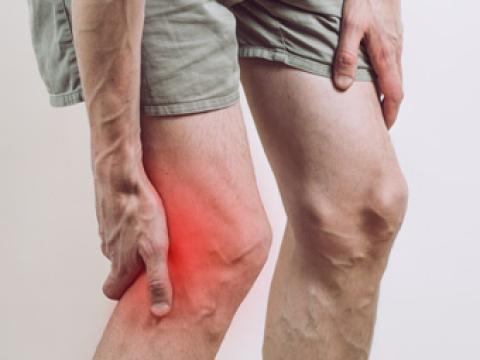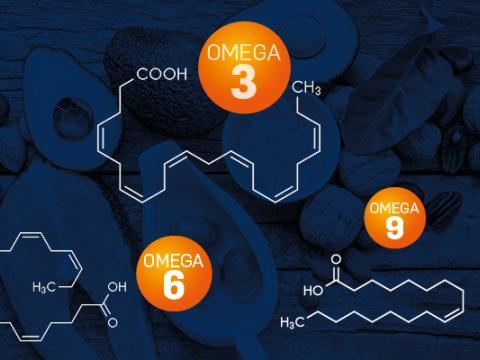Although osteoarthritis cannot be cured, it can be treated. To relieve the pain and discomfort of osteoarthritis, action can be taken on two levels :
- reduce the pain during the chronic, less intense phases of the condition
- slow the progression of the disease.
Reducing inflammation using natural solutions
Anti-inflammatory action of omega-3
Omega-3 EPA and DHA polyunsaturated fatty acids offer a number of recognised beneficial effects, including anti-inflammatory properties. Since the joint degeneration process involves local inflammation, an adequate nutritional intake of these fatty acids appears to be beneficial1,2.
The intake of these fatty acids can be increased by consuming more oily fish (salmon, sardine, tuna, mackerel, etc.) as well as rapeseed, walnut and camelina oils.
Plants to combat inflammation
Turmeric (Curcuma longa L)
Curcuma Longa L., a plant that is native to south Asia, is rich in curcumin. In-vitro studies have shown that curcumin appears to inhibit inflammatory cytokines. In humans, studies have shown that curcumin offers significant relief from joint pain for treated subjects3.
Boswellia
Boswellia serrata is a tree that is native to India. Its resin, obtained by making incisions in the bark, is used in Ayurvedic medicine. Boswellic acids inhibit the activity of inflammatory cytokines and of enzymes associated with inflammation (in-vitro study)4. Its extracts reduce pain levels in patients with osteoarthritis5.
Devil’s claw
Harpagophytum procumbens DC is a plant from Namibia which is used in South Africa to relieve pain caused by rheumatism, fevers, etc. The plant is acknowledged to have analgesic and anti-inflammatory properties6,7. ESCOP (European Scientific Cooperative on Phytotherapy) recognises the use of the secondary roots of Devil’s claw for the symptomatic treatment of painful joint symptoms, lower back pain, loss of appetite and dyspepsia. EMA (European Medicines Agency) recognises its traditional use for joint pain.
Willow
Willow (Salix), is a tree that is rich in salicylic acid (the ancestor of aspirin) and has been used for thousands of years to relieve joint pain and treat fever. According to the French medicines agency’s reference guide (Médicaments à base de plantes, 1998), willow bark is traditionally used orally “as an analgesic (headache, toothache) and orally and topically “for the symptomatic treatment of minor painful joint symptoms”.
Its bark does, in fact, have a very high content of salicylate derivatives which are metabolised into salicylic acid and give willow its analgesic and anti-inflammatory properties that are indicated for osteoarticular disorders8.
Slowing the progression of osteoarthritis
Cruciferous vegetables, a source of sulphoraphane
Vegetables belonging to the crucifer family (all cabbages, turnip, watercress, broccoli…) have been found to be beneficial due to their high sulphoraphane content. Indeed, according to a study published in Arthritis and Rheumatism9, sulphoraphane, released after the consumption of cruciferous vegetables (e.g. broccoli), appears to slow down the destruction of cartilage in joints.
Specific micronutrients: Glucosamine and Chondroitin
Glucosamine
This substance is naturally present in the body, and is formed from glucose and glutamine. It is mainly found in the cartilage and performs an important maintenance role. The research work carried out on this substance has been motivated by the idea that the intake of this precursor might stimulate the synthesis of the cartilage matrix. Studies have shown that a 4 to 8-week ingestion of glucosamine10-17:
- improves the symptoms (pain and functional disability in particular),
- slows down the loss of cartilage,
- reduces the amount of analgesics consumed and/or improves quality of life.
Glucosamine can be ingested orally since it is a derivative of chitin, present in the shells of crustaceans (e.g. Dublin Bay prawns (langoustines)).
Chondroitin
This compound is also manufactured by the body and its production reduces with age. It helps to reduce symptoms by alleviating the stiffness of the joint. Chondroitin sulphate is found in shark or ray cartilage which means that it is unlikely to be consumed in a normal western diet. In western countries, chondroitin and glucosamine compounds are available as food supplements.
For optimal efficacy and to avoid all adverse reactions, it is advisable to consult a healthcare professional.






